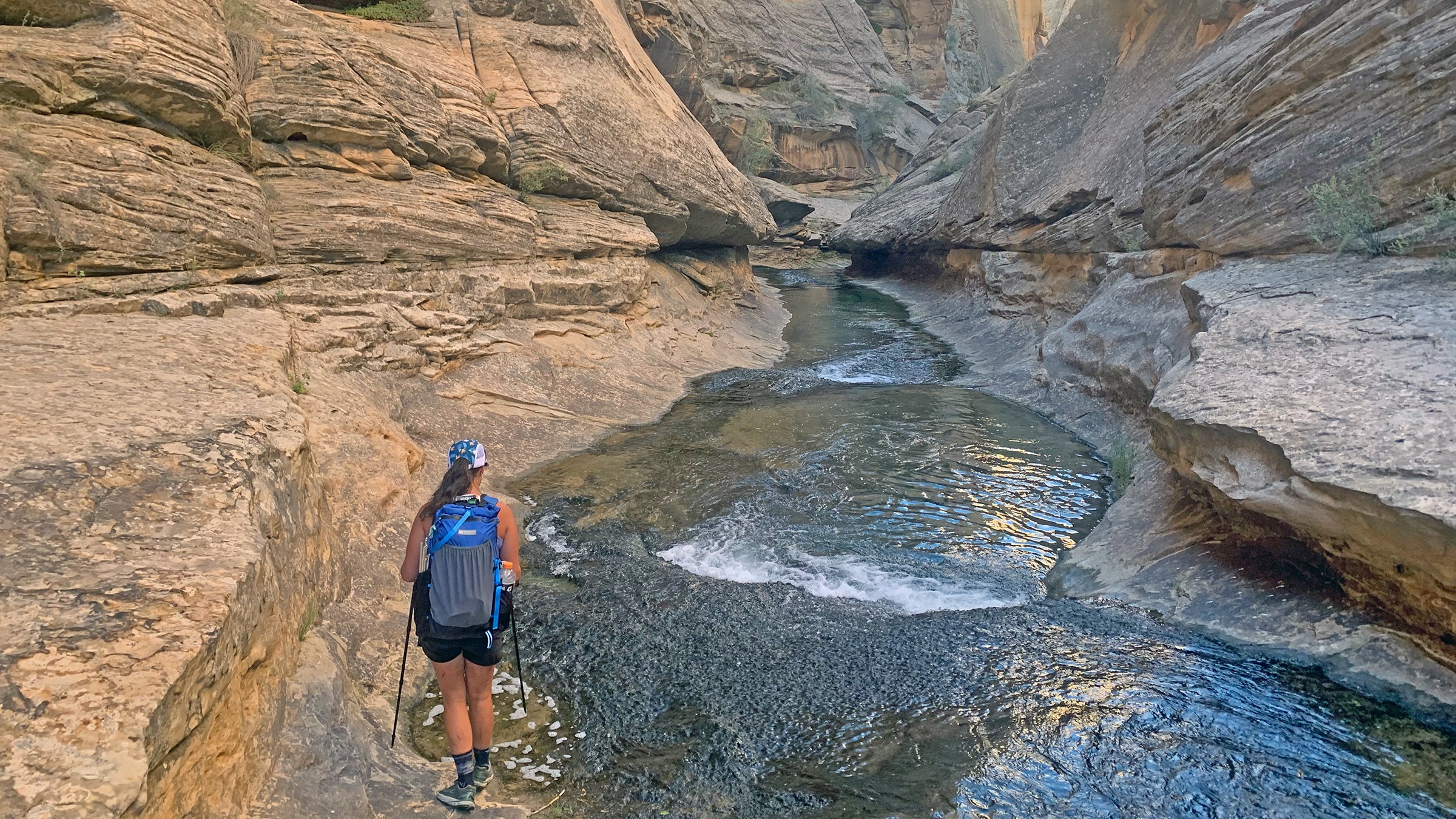In Praise of National Monuments

(Photo: Jeff Garmire)
Hiking isn’t just a hobby—it’s a lifestyle. Maggie Slepian tackles the hiking life—and all of the joys, problems, arguments, and weird quirks that go along with it—in her column.
It was late spring in Montana. Translation: it was muddy, it was snowy, and my boyfriend Jeff and I were desperate to backpack somewhere with dry trails. We made a last-minute decision to head south, and packed the truck for a trip to southern Utah. The region’s expansive public lands and generally arid weather has long made it my favorite shoulder-season destination.
On the way, we talked about aiming for one of Utah’s “Mighty Five” national parks, but we quickly realized that, with our last-minute trip, backcountry permits and campsite reservations would be a nonstarter. As we continued south on I-15 and the views changed from grey mountains to red sandstone, we decided on Grand Staircase-Escalante National Monument, where we could grab a walk-up permit without so much as waiting in line.
Utah is home to more than three million acres of public land, including 43 state parks, parts of eight national forests, and five national parks. Much less-visited are the seven national monuments across the state, including the bitterly disputed Grand Staircase-Escalante and Bears Ears. That’s a shame: The US’s national monuments are some of its most undervalued public lands, light on visitors while tourists mob the marquee national parks.
The 129 US national monuments vary drastically, from the urban environs of the Statue of Liberty in New York to Alaska’s remote Mount Aniakchak. These monuments protect historically and culturally significant sites, as well as ecosystems including marine habitats, deserts, volcanoes, grasslands, and canyons.
Management for national monuments also varies. While the National Park Service oversees national parks, departments ranging from the Bureau of Land Management to the Department of Defense take part in managing the monuments, depending on where they’re located and the reasons for their designation. Since presidents can designate national monuments without congressional approval, chief executives from Teddy Roosevelt to Donald Trump have used them to protect American natural and cultural heritage, though Trump’s decision to cut protections for Bears Ears and Grand Staircase-Escalante calls into question just how permanent those protections are.
After picking up our permits, we sat on the porch of the Escalante Mercantile and plotted an overnight route. We’d start from a trailhead near town, then loop through Box-Death Hollow Wilderness to the confluence of the Escalante River. From there, we’d follow the riverbed back for a total of 23 miles.
Our route climbed steeply on the Boulder Mail Trail to a view of the valley below. We followed cairns over alternating miles of slickrock and shifting, ankle-deep sand. The footing was challenging and the sun exposure on the pale stone sapped my energy. The views kept us going through, and we stopped often to take photos and marvel at the landscape.
We crested the final plateau to see the mouth of the canyon in front of us. The striated, rounded rock formations looked like something from another planet. From here, the trail descended more than 1,000 feet into the cool, quiet of the canyon.
For the next nine miles we hiked in and out of the river, splashing through waters that ranged from ankle- to thigh-deep. We cowboy camped that night on a sandy beach, falling asleep to the low chatter of the river a hundred yards away.
In the morning, we hiked through overgrown trails—It’s poison ivy! I howled as I tried to push the vines aside with my trekking poles. A few miles later, I slipped off a ledge into the deep narrows, paddling frantically with my poles looped around my wrists and my pack bumping against my back.
The canyon walls were a new color around every turn, from dusty pink to vibrant red, so sheer they looked like they’d been carved by a knife. Before we knew it, we were back at the truck— hot and dusty, but in awe at the terrain we’d been immersed in.
This loop ended up being one of the best overnight trips I’ve ever done. Over two days, we’d seen the smallest fraction of the million-acre Grand Staircase-Escalante National Monument, but it opened my eyes to out-of-the-box backcountry options.
Setting off into this underappreciated wilderness helped me remember something essential about hiking: sometimes the most spectacular experiences are hiding in the shadow of the best-known ones. While visiting each national park is still my ultimate goal, I’ve added to my post-pandemic wish list. I want to see the prehistoric encampments in Colorado’s Browns Canyon, the brilliant sandstone of Nevada’s Gold Butte. I want to backpack Vermillion Cliffs in Arizona and tour Jewel Cave in South Dakota.
Looking beyond center-stage destinations has opened up a whole new world of possible exploration. With positive progress for public land protection, my hope is that these places will be here to stay.